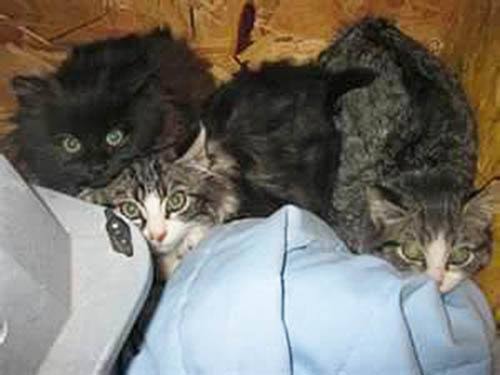Wild, or feral, cats live in groups where there is food, companionship and breeding partners, as well as safety in numbers.
Often these feral colonies are not in the wilderness as you might imagine but can be found in the downtown core of any city. They are essentially wild animals who have no need or desire for contact with humans.
Tuesday, Oct. 16 was National Feral Cat Day, in the U.S.
As defined by www.feralcat.com, a feral cat is the wild offspring of domestic cats and are primarily the result of pet owners’ abandonment or failure to spay and neuter their animals, allowing them to breed uncontrolled.
These cats are not pets and have no desire for human contact and are therefore unadoptable.
When two stray cats, one male and one female, who have not been spayed or neutered get together, there is a potential for a feral colony and the math is mind boggling.
The Humane Society of the U.S. estimates that a pair of breeding cats and their offspring can exponentially produce over 400,000 cats in seven years.
There are many animal rescue organizations that have been working with their local governments and the general public to help control and minimize local feral cat populations to improve the lives of these animals and their human neighbours.
Initially the cats from these colonies were trapped and euthanized in the hopes of controlling colony growth.
However, it is now apparent that this creates a vacuum effect in the colony that is quickly filled by other feral cats living close by.
The overall effect is expensive to taxpayers with no appreciable benefit.
A more compassionate, and more cost effective, method is trap, neuter and return (TNR) them.
Cats from these areas are trapped, spayed/neutered, identified and returned to their territory where they are free to live out their lives.
The best scenario is that these animals have a little human help with food and water, but little to no other human contact.
The newly fixed cats are less aggressive, roam less and are quieter because they no longer feel the need to fight for mates or territory.
All of these qualities make it much easier to live next door to them.
As time passes, the colony diminishes through natural causes and the animals that die are less likely to be replaced, thereby avoiding the vacuum effect.
So in honor of National Feral Cat Day, I am asking you to help these animals. Educate yourself on the feral cat situation in your area and educate someone else.
Help keep these populations in check by supporting local TNR programs and have your own pet spayed/neutered.
Need a place to start? Check out Katie’s Place feral colony: http://katiesplaceshelter.com/the-animals/feral-cats/
Barbara Paulic is a volunteer at Katie’s Place, an animal shelter in Maple Ridge.
